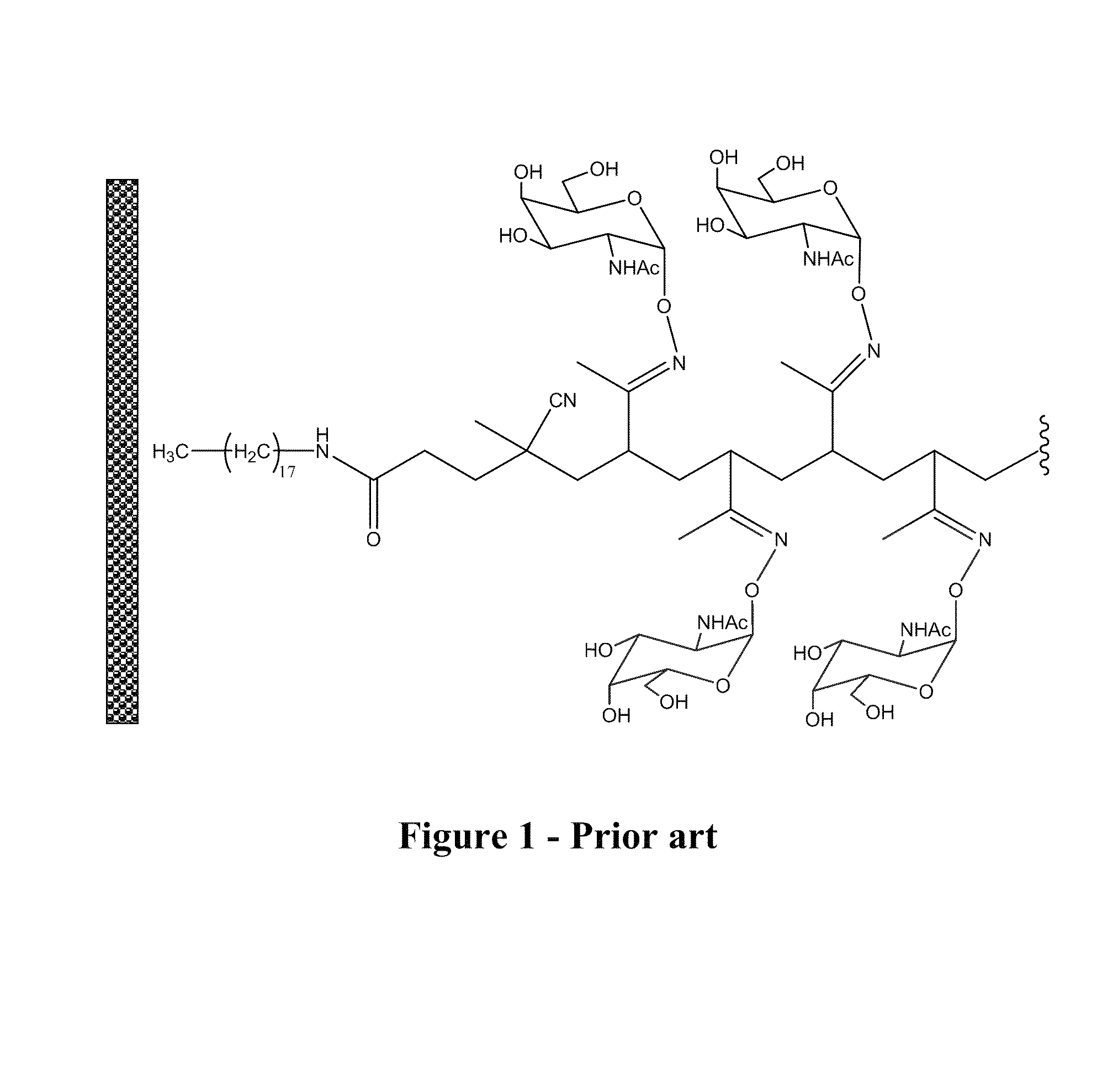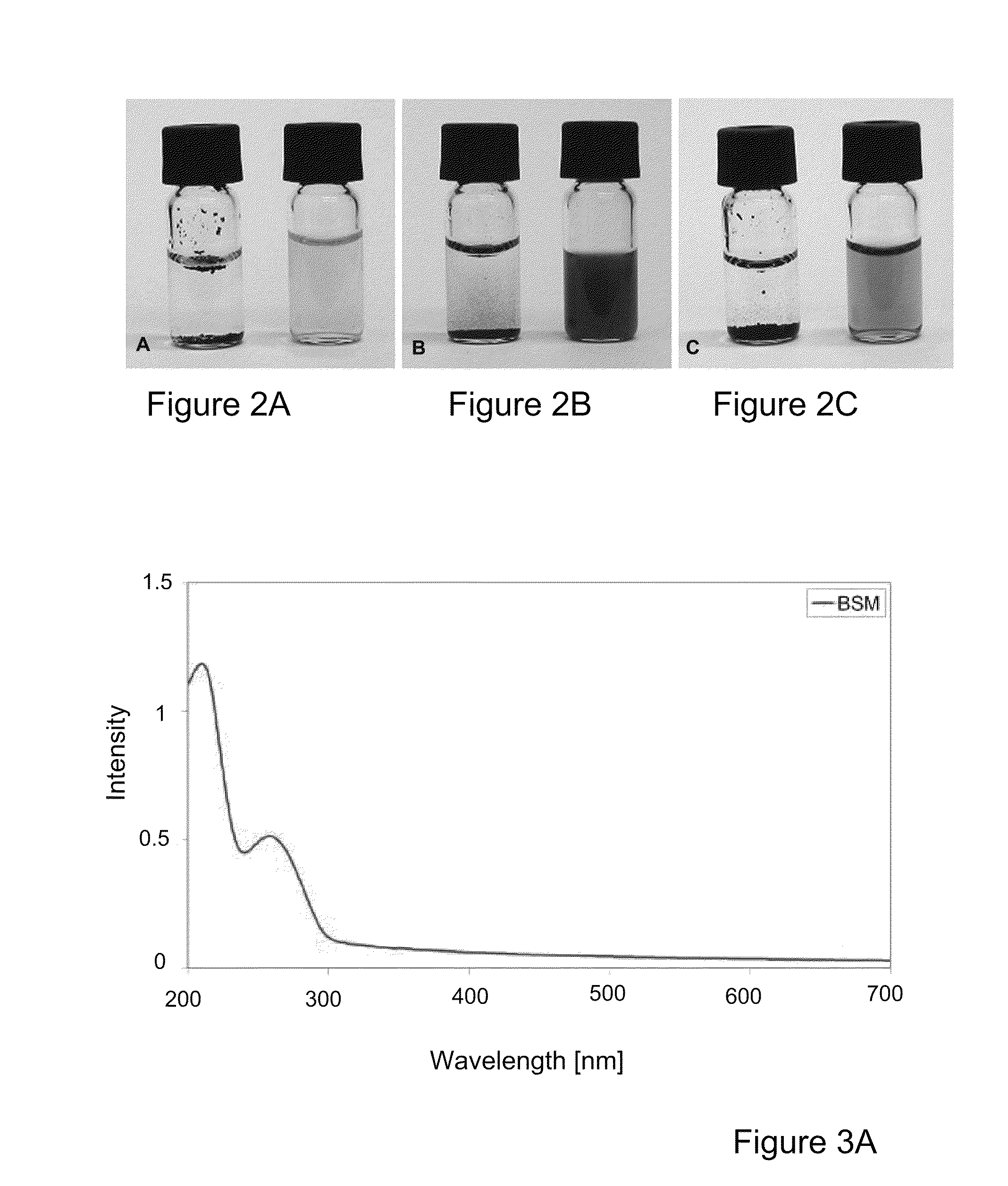Nanomatrix separation of chromophores and uses thereof in luminescent devices
a technology of chromophores and luminescent devices, which is applied in the direction of discharge tube luminescent screens, coatings, and nanotechnology, can solve the problems of nonradiative emission, change in optical profiles, and difficult mission for creating white light from a single componen
- Summary
- Abstract
- Description
- Claims
- Application Information
AI Technical Summary
Benefits of technology
Problems solved by technology
Method used
Image
Examples
Embodiment Construction
[0090]Before explaining at least one embodiment of the invention in detail, it is to be understood that the invention is not necessarily limited in its application to the details set forth in the following description or exemplified by the Examples. The invention is capable of other embodiments or of being practiced or carried out in various ways.
Exemplary Solubilizing Agents
[0091]In some exemplary embodiments, the backbone is bound to oligosaccharides. Optionally, at least some of the oligosaccharides are branched. Alternatively or additionally, the number of sugar units per oligosaccharide is from about 5 to about 15.
[0092]In some exemplary embodiments, the branching degree (BD) of the sugar substituted polypeptide is between about 0.086 and 0.45, when calculated using the Equation 1:
[0093]BD=(1∑n1)+(2∑n2)+(3∑n3)…T+LEq.1
[0094]In Equation 1, BD is the degree of branching, T is the total number of monomer units, L is the number of units in the longest, least-branched, continuo...
PUM
| Property | Measurement | Unit |
|---|---|---|
| size | aaaaa | aaaaa |
| size | aaaaa | aaaaa |
| w/w | aaaaa | aaaaa |
Abstract
Description
Claims
Application Information
 Login to View More
Login to View More - R&D
- Intellectual Property
- Life Sciences
- Materials
- Tech Scout
- Unparalleled Data Quality
- Higher Quality Content
- 60% Fewer Hallucinations
Browse by: Latest US Patents, China's latest patents, Technical Efficacy Thesaurus, Application Domain, Technology Topic, Popular Technical Reports.
© 2025 PatSnap. All rights reserved.Legal|Privacy policy|Modern Slavery Act Transparency Statement|Sitemap|About US| Contact US: help@patsnap.com



